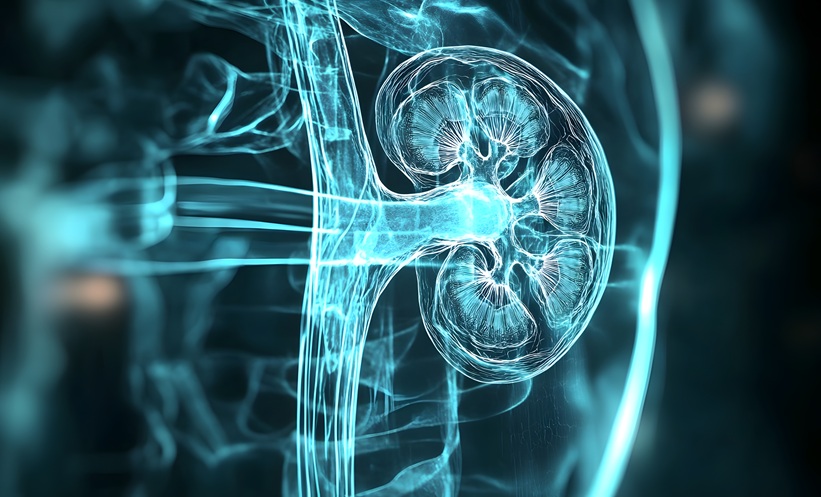Author: Lenos Archer-Diaby, Editorial Assistant, EMG-Health
CHRONIC kidney disease (CKD), a long-term condition resulting in the gradual loss of kidney function, is surrounded by debate regarding validity of observations and definitions of terminology and classifications. This subject drove the “Chronic Kidney Disease: Two Decades of Progress and Challenges for The Future” session held on the 7th June during the ERA-EDTA Virtual Congress 2020.
HISTORY
The session was hosted by honorary ERA-EDTA member Prof Andrew Levey, Tufts Medical Center, Boston, Massachusetts, USA, a widely recognised authority on clinical practice guidelines in CKD, who showcased the evolution of our understanding of the disease.
Prof Levey started by providing a history of the advances made in the field of CKD management and treatment. This began in 1886, when Max Jaffe developed an assay for creatinine concentration determination; it is one of the most commonly used assays in clinical laboratories today.
Following this, it was Dr Homer Smith who, in 1935, discovered that inulin fulfils the necessary criteria for an ideal filtration marker to measure clearance. Prof Levey himself was the Principal Nephrologist Co-investigator for the Modification of Diet and Renal Disease (MDRD) Study, the largest randomised clinical trial to test the hypothesis that protein restrictions slow the progression of renal disease. The results of this study, presented in 1994, failed to demonstrate a beneficial effect of protein restriction.
This led to the 1999 MDRD Study equation aiming to estimate glomerular filtration rate from serum creatinine, which ultimately transformed clinical evaluation of kidney function and led to the subsequent founding of the CKD-EPI equation based on creatinine, cystatin C, and other filtration markers. Other important breakthroughs in the field include Richard Bright’s discovery of the association between total urine protein and oedema and CKD as observed in post-mortem studies, and Hermann Senator’s studies of urine albuminuria, which disproved the then held notion that albuminuria was a definitive sign of CKD.
Prof Levey then described further observations from various studies and noted that although recognition of these observations about kidney disease measures were beneficial, translating them into routine clinical practice required standardisation of laboratory methods.
GUIDELINES AND CLASSIFICATION
CKD was first defined and classified in the National Kidney Federation (NKF) Kidney Disease Outcomes Quality Initiative (KDOQI) guidelines of 2002, which were updated in 2012 by the Kidney Disease Improving Global Outcomes (KDIGO). The guidelines aimed to provide a conceptual principle for CKD with kidney failure as the end stage. CKD was defined as displaying markers for kidney damage or GFR <60, while kidney failure was defined as GFR <15 or requiring treatment by dialysis for a duration greater than 3 months.
However, following controversies regarding the definition, classification, and prognosis of CKD, a major impetus for the 2012 guidelines, KDIGO stated that the classification should revolve around patient prognosis. The 2009 KDIGO Chronic Kidney Disease: Definition, Classification and Prognosis Conference reached a consensus on revisions to the classification of CKD based on prognosis but did not propose to change the definition of CKD. As a result, the classification was changed from five stages by KDOQI to six GFR categories and three albuminuria categories by KDIGO. Furthermore, GFR, albuminuria, and cause of disease were emphasised as part of the classification.
RISK FACTORS FOR CARDIOVASCULAR DISEASE
Although only added to the classification in 2012, these risk factors had been noted far earlier. As early as 1974, a study observed accelerated sclerosis among patients treated with prolonged maintenance haemodialysis. Furthermore, in 1998 the NKF Task Force on Cardiovascular Disease, led by Prof Levey, found evidence for kidney failure leading to cardiovascular death, but also showed decreased GFR as well as albuminuria and proteinuria in earlier stages of CKD.
A 2010 study found that lower estimated glomerular filtration rate (eGFR) and albuminuria are independent risk factors for all-cause and cardiovascular mortality in the general population. Similar findings were reported in other cardiovascular disease outcomes including coronary heart disease, stroke, peripheral artery disease, and leg amputation. Recently, in 2017, the Global Burden of Disease study (GBD) and Chronic Kidney Disease Prognosis Consortium (CKD-PC) estimated global cardiovascular and renal outcomes of reduced GFR and found that in 2013 reduced GFR was associated with 4% of the deaths worldwide (2.2 million), and more than half were cardiovascular deaths (1.0 million) compared to end-stage renal disease (0.9 million).
Following the 2009 conference, controversies persisted regarding the application of GFR and albuminuria thresholds to different risk groups. Therefore, the CKD-PC proposed the following question: “Are the eGFR and albuminuria risk thresholds for the CKD definition consistent across subgroups defined by hypertension, diabetes, age, gender, and ethnicity?”
Using 46 cohorts, the CKD-PC published a series of papers to address this question, which showed a higher absolute risk in high-risk subgroups and a similar, or higher, relative risk in low-risk subgroups. These findings indicate that both lower eGFR and higher albuminuria are important in both low-risk and high-risk groups. Therefore, lower eGFR and higher albuminuria cannot be considered ‘normal’ in any subgroup including older age.
CHRONIC KIDNEY DISEASE CLINICAL ENDPOINT
For many years, the number of randomised controlled trials in kidney disease has lagged behind other specialties. This is in part because it is harder to conduct clinical trials in kidney disease, because the hard-clinical endpoint of kidney failure (GFR <15) occurs many years after the onset of the disease. GFR decline occurs before the onset of kidney failure; proteinuria or albuminuria arise before the stage of GFR decline.
With this in mind, and with support from NKF, CKD-EPI and CKD-PC collaborated with the U.S. Food and Drug Administration (FDA) and the European Medicines Agency (EMA) to assess the validity of proteinuria and albuminuria as surrogate endpoints. The agencies have now accepted that doubling of serum creatine is a valid surrogate endpoint for the clinical endpoint of kidney failure.
Prof Levey then presented two current models for the use of GFR and albuminuria in predictive instruments that he believes are ready for clinical use.
FUTURE OUTLOOK
In his concluding remarks, Prof. Levey commented that there are still controversies regarding CKD definition and classifications, overdiagnosis, methods, threshold values, and nomenclature. However, he added: “In each case we feel that debate has been beneficial. It has forced us to think more clearly, perform more analyses, and make appropriate revisions.”
Looking towards the future, Prof Levey emphasised that eGFR and urine albumin creatinine ratio should be used more frequently in clinical practice, research, and public health settings, because they are powerful measures that are easy to obtain for the detection and staging of acute CKD, and are markers for risk and prediction of heart and vascular disease.
In his closing remarks Dr Levey reiterated that: “It is time to move forward from debate about validity of the observation and semantics of the definition and classification to the challenges of improving clinical practice, seeking explanations for high prevalence and poor prognosis, and testing strategies for prevention and treatment of CKD.”






